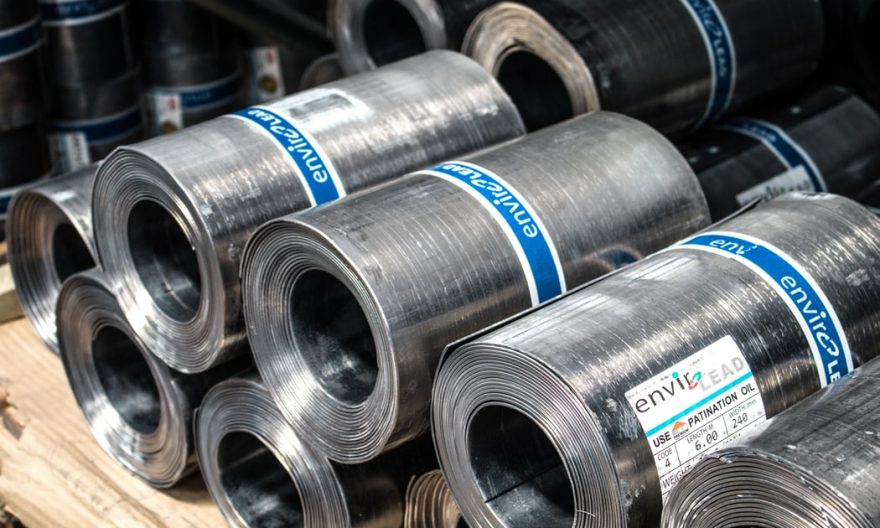
The European Union is introducing a tax on imports that emit high levels of carbon dioxide such as iron, steel and aluminium products. The tax, known as the carbon border adjustment mechanism (CBAM), will come into effect from 1 October this year and will gradually rise until 2026. The CBAM is being introduced to reduce greenhouse gas emissions and to encourage a global transition to a low-carbon economy.
The CBAM will have a massive impact on India’s metal exports to the EU which stood at $8.2 billion in 2022. According to a report by the Global Trade Research Initiative (GTRI), CBAM will translate into a 20-35% tax on select imports into the EU starting 1 January 2026. This will increase costs and reduce competitiveness for Indian firms, resulting in the loss of billions of dollars of exports.
READ I Closing the biodiversity gap: How biocredits could save our ecosystems

Strategies for Indian industry
Indian manufacturers need to improve energy efficiency and reduce carbon intensity. One way to offsetting the CBAM tax is to reduce carbon emissions in the production process. Indian firms can invest in energy-efficient technologies, switch to cleaner fuels, adopt best practices and standards, and participate in voluntary emission reduction schemes. This will not only lower the tax burden, but also improve environmental performance and social responsibility scores.
Another way to cushion the impact of CBAM is to explore alternative markets and products that are less affected by the tax. Indian companies can diversify their export destinations and tap into emerging markets that have lower carbon requirements or offer preferential trade agreements. They can also diversify their product portfolio and focus on value-added or niche products that have higher margins and lower carbon footprints.
A third way to cushion the impact of CBAM is to engage in dialogue and cooperation with the EU and other stakeholders. Indian firms can seek clarity and transparency on the implementation and calculation of CBAM, and voice their concerns and suggestions. They can also collaborate with industry associations, civil society groups, research institutions, and government agencies to advocate for fair and equitable trade rules that take into account the different development stages and capacities of countries.
Can India support industry from CBAM impact
What should India do to protect its economic interests? Here are some possible steps:
- Negotiate for a fair and balanced CBAM: India should engage in constructive dialogue with the EU and other trading partners to ensure that CBAM is fair and balanced, and does not violate the principles and rules of the World Trade Organisation (WTO). India should seek exemptions or adjustments for its exports based on its development status, historical responsibility, and differential capabilities. India should also demand transparency and accountability on the implementation and calculation of CBAM, and challenge any arbitrary or discriminatory measures.
- Strengthen domestic climate action and policies: India should also strengthen its domestic climate action and policies to align with its commitments under the Paris Agreement and the Sustainable Development Goals. India should enhance its nationally determined contributions (NDCs) and set ambitious targets for reducing greenhouse gas emissions and increasing renewable energy sources. India should also implement effective carbon pricing mechanisms, such as carbon taxes or emissions trading systems, to incentivise low-carbon development and innovation.
- Leverage regional and multilateral cooperation: India should also leverage regional and multilateral cooperation to address the challenges and opportunities posed by CBAM. India should work with other developing countries, especially in the South Asian region, to coordinate their positions and responses to CBAM. India should also participate in global forums, such as the G20, the UNFCCC, and the WTO, to shape the international agenda and norms on climate change and trade. India should also explore opportunities for collaboration and partnership with the EU and other countries on green technology transfer, financing, and capacity building.
India will be among the countries that will suffer most from the EU move, says the GTRI report. The government and the industry should analyse the impact of the EU tax and prepare an export promotion strategy. Indian firms are at the risk of losing market share in one of the largest importers. Indian companies should try to wrest EU market share from Russian and Chinese rivals, and part of the EU’s export market share.
The long-term solution for Indian firms is to set up low-carbon facilities without closing the existing ones. Indian firms are eyeing green hydrogen as a viable option, but it may take some time to fructify. They should also become more transparent and share their emission data with the EU from the third quarter of the current year, says the report.
